Turismo, Hostelería, Gastronomía y Restauración
Senior tourist motivation
Tourist Behaviour - Module leader:
2172 words
Senior tourist motivation
&
senior tourist
Profiles
SENIOR TOURISM IN MAJORCA
Edited in Palma of Majorca, February 2001
by
Oxford Brookes University
Bachelor of Arts in Tourism Management
GRATITUDES
Mrs Joana Petrus, Sports General Secretary of Balearics Government
Jaime Nadal Mir, Economic Development Director of Calvia's City Hall
Javier de Benito, editor of “La Economía Balear” and “El Mundo”
Antoni Aguilo, Ph. D. in Economics in U.I.B., University of Balearics
and all those 20 visitors who helped me with the questionnaires.
INDEX
-
Introduction: objective, methodology and area of analysis............. page 9
-
Definitions....................................................................................... page 10
-
Analysis of interviewed supported with other information:
-
Different typologies of senior tourists..................................... page 13
-
Travel motivations.................................................................. page 13
-
Sport senior tourist................................................................. page 14
-
Way of booking....................................................................... page 14
-
Age groups............................................................................. page 15
-
Daily tourist spent................................................................... page 16
-
Satisfaction level.................................................................... page 17
-
Conclusions and suggestions to improve the tourist product......... page 18
Introduction: objective, methodology and area of analysis
The objective of my study is to analyse the tourist motivation and tourist profiles of the senior citizens who visit Majorca and to know their needs and demands in order to improve the tourist products that are offered to them. Because of the many different typologies of tourists I have targeted my analysis on the Spanish seniors citizens who visit Majorca during the winter and who do not travel with sponsored packages by Imserso (National Welfare), such as 135.500 did during winter 1998.
The methodology of my study is based on secondary data achieved by conversations with people specialised in the tourism industry, internet, specialised books, official data publications, newspaper articles and tourism specialised magazines. Besides, all this collected data is supported by 20 questionnaires done in the centre of Palma and in the surroundings of Hotel Bonanza Playa of Illetas and Hotel Nixe Palace of Cala Mayor, areas where there are thousands of visitors during the whole year.
The area of analysis is the Spanish island of Majorca, located on the west Mediterranean coast and the main European tourist destination and biggest Mediterranean resort with over 325.000 beds. The tourism boom in Majorca began during the `60s with a big promotion campaign of the Spanish Secretary of Tourism, Manuel Fraga, titled “Spain is different”. Majorca was the main destination for Spanish honeymoon couples. Many of those honeymooners
come back again in order to remember those happy days and some of them are those whom I have interviewed. In the `60s there were only 20.000 beds and the
island was visited only by 400.000 people every year. Since the `90s, 9.000.000 tourists come every year to visit the main Balearic island.
Definitions
Erik Cohen defines a tourist as follows: A tourist is a voluntary, temporary traveller, travelling in the expectations of pleasure from the novelty and change experienced on a relatively long and non-recurrent round-trip.
According to most publications, senior citizen tourist is a retired person over the age of 60 years old who are still active and have money and time to travel. Western population is getting older and older, so that the importance of these seniors is growing and is a booming market. Therefore, the tourist industry focuses on these travellers for their winter campaigns, when sun and beach tourism is over. Other authors, such as Chris Ryan (1995), consider senior citizens from the age of 55 years old, when some people are pre-retired. But most of these people do not consider themselves as senior or elderly until their 70th birthday rolls around. Senior citizens are active in many ways and stay
busy most of their time. They travel in more ways than previous generations.
For Spanish seniors most destinations are domestic, around 90%, the biggest European difference and after Nordics (Swedish, Norwegians and Finnish) they are the ones who travel more per year: 2,5 .
The characteristics of senior citizen by Kathleen Lingle (1993) simply reflect those of human nature as a whole. Contrary to some perspectives, people do not arise on the morning of their sixty-sixth birthdays grumpy, demanding, or impatient. The aging process seems, however, to accentuate eccentricities, and as they age, people often become caricatures of their best and worst selves.
Part of these people has suffered a drastic life-change at home: children have left and home has become an “empty nest”. Parents have more time and money for themselves . However, most of them are sad in the “empty nest”.
In the Healing About poll 178 out of 196 affirmed that the “empty nest” makes them sad . Nevertheless, in Spain more and more the “empty nest” is delayed because “children” stay at home over the age of 30.
Healing About poll
Moreover we have got “snowbirds” or “sunseekers”, cold-blooded older persons who flee northern climates for warmer zones during the winter season and flee back in summer when weather is not as hot as in southern climates.
Especially in the United States there are formed groups of “sunseekers” who travel along east coast from New York, Boston or Philadelphia to Florida, returning back home during the summer. Jaime Nadal affirms that there are thousands of these seniors “sunseekers” with a second residence in Calvia, most Germans or Britons, and they spend the fresh summer in their country of origin and the warm winter here. These people have a high purchasing power and many of them flies to Majorca every weekend to enjoy the sun and climate. Some of the interviewed have an apartment in the theirs cities centres and a chalet in the mountain as well to spend weekends and summer, and they travel to south of Spain or Majorca during the winter.
Different typologies of senior tourists and Travel motivations
We can classify senior citizen tourists into 5 different groups, depending on their activities during the travel. Now then, most visitors combine different activities because the sun is related with all other activities. These forms or groups are: sun, shopping, sport, family & friends and cultural visit. According to a Local Government survey, questionnaires and Chris Ryan, the main reason to come to Majorca is the weather. The warm climate and the sun are, with an 80% of the answers, the motive why seniors want to spend part of the winter in this sunny Mediterranean island. Most time of the day they walk or stay staring at the sun. It is what is called the sun call. This reason is followed far away by sport, cultural visits, shopping and family or friends.
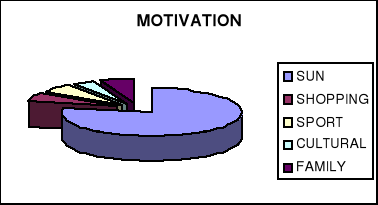
This result has advantages and disadvantages: while there is a sunny sky over Majorca, tourist will visit it again and again, despite other disadvantages or complaints. But tourism is an elastic demand and the sun is over all Mediterranean countries and any change, such as price increase, could
represent the getaway of thousands of tourists to other destinations.
Sport senior tourist
In Mrs. Joana Petrus opinion, with data of Local Government, there are four top sports practised by senior tourist: golf, cycling, sailing and trekking. The complementary offer of Majorca for practising sports is almost unbeaten by any other country, with a variety of golf courses, a wide range of roads for cycling and trekking and the largest Mediterranean offer of docks and coves for sailing. In this point, as in the point of sun, Majorca satisfies the demand of our senior visitors. About shopping and cultural visit our interviewed visitors are not specially impressed, but they like it, they do not complain about it.
Way of booking
Moreover I have to stress an important point that is that Spaniard do not like to travel alone, they always travel with family or friends or with an Imserso group. 130.000 senior tourist out of 330.000 flew to Majorca during the year 2000 during low season with sponsored packages by Imserso . Almost all of other Spanish senior tourists and all of my interviewed seniors booked their trip in a travel agency. In comparison, European seniors booked their travel in a tour-operator as a package. 40% of them booked a whole package and just 20% did it in a travel agency.
Age groups
I have divided the interviewed people into three different age ranks: from 55 to 65 years old, from 65 to 75 and over 75. The legal age for retirement in Spain is the age of 65 and the life expectancy is of 74 years for men and 81 for women. More important than life expectancy is the life expectancy with good health that in Spain is of 74 years. The first group are the pre-retired, people still young at heart, but just few people do not work at this age and it is difficult to difference them on the street. The second group is the largest because it includes the newly retired. The third group includes the fewer number of visitors and are people who do not travel so much.
Daily tourist spent
The senior citizens who travel on their own, not with Imserso, are people with good purchasing power and lodge themselves in high category hotels of 4 or 3 Superior star hotels, near the city centre or near golf courses. Besides, they demand sea views from the rooms. Imserso seniors visitors are always lodge in 3 stars hotels and they spend about 24 euros each person per day.
Interviewed visitors affirm that they spend about an average of 42 euros each, but golfers spend near 120 by day. On the other hand there are many senior visitors who come to visit their family or friends and they lodge in their houses. People visiting friends or family travel for 2 weeks or more.
The percentages of types of lodging are so different with the official Government data of all Spanish senior visitors in Majorca in the year 2000. 2 star hotels are used in the same percentage as 4 stars (7%). The results were:
Satisfaction level
Almost all the interviewed seniors affirm that they are satisfied and that they will, or might, repeat the visit to Majorca. Some of them are loyal clients and it is not their first time in Majorca. Nevertheless, Spanish people do not usually repeat destination, as most Europeans do. They like to visit and to know new places. There is a big difference between the intention to repeat visit and the real repetition of the visit. Just 20% of Spanish seniors have visited Majorca 3 times or more, as opposed to 70% of German seniors.
The level of satisfaction of the hotel is high, no one complained about it. The interviewed people focused their complaints on Palma's airport, public transport
and on prices. The airport is so uncomfortable, with such long corridors, long wait for luggage and bad organised taxi stop. These problems get worse for elderly or disabled people. They complain as well on the frequency and price of public buses; single ticket costs 1.05 euros while in some places in mainland costs 0.45. Moreover, they claim for more taxis. Senior visitors complain also on bars and restaurant prices.
Conclusions and suggestions to improve the tourist product
In order to improve Palma's public transport, the city hall has just changed the bus fleet, but prices are still the highest of Spain. In regards to taxis, the City Hall is negotiating with taxi drivers and service will be better soon. The inconveniences of the airport have a hard solution because it is a relatively new airport, inaugurated in 1997, with a big investment of about 241 million Euros . The worse part of having a bad airport is that it is the first thing that visitors see when they arrive in Majorca and also the last, and first impression is the most important one.
The problem of high prices of bars and restaurants has no solution because they are private businesses and are ruled by market laws and the law of supply and demand. While they have clients and benefits, prices will remain high.
In order to improve satisfaction levels of winter visitors, increase the number of tourists and “deseason” (lengthen the tourist season and distribute visitors along the year), the local Government of Balearics is making a strong effort in a
campaign called “A winter in Majorca” paraphrasing the title of the book of the archduke Luis Salvador of Austria. The Government, by means of the Balearic Tourism Institute, IBATUR, is sponsoring a program of spare and cultural activities, such as concerts, sport activities, folklore exhibition, excursions and guided visits. This campaign begins in October and lasts until April and tries to make visitors feel better and to have a pleasant stay. Besides, the local Government offers 10.000 trips for Balearic seniors inside the archipelago.
However, the campaign “A Winter in Majorca” is not working properly and the number of visitors is dropping and tourist industry blames it on the local Government. We cannot use a system to improve our senior visitors' stay that hypothetically should work, but it does not. In my opinion, based on the interviews and on my own experience, simply improving public transport increasing number of taxis, increasing frequency of buses and reducing the price of the tickets and renovating the disastrous Palma's airport, our senior tourists would enjoy their stay in Majorca and they would be satisfied, and probably they will come back again, being this the main objective of tourist
industry, because clients' loyalty gives stability to the tourist businesses, reduces expenses of marketing and promotion, increases benefits because loyal clients use to book by themselves and not by tour-operators which give low benefits to hotels and tourist loyalty rewards the well done work.
BIBLIOGRAPHY
Garau J. El Turismo Senior en Baleares. 2000. 1st Edition. CAEB (2000)
Cohen E., 1974, Who is a tourist?: A Conceptual Clarification, Sociological Review, 22 (4) 527-555
Ryan C. Learning About Tourist From Conversations. Butterworth (1995)
Lingle Pond, Kathleen, 1993, The professional guide - The Traveller, John Wiley and Sons, Inc., 48-64
El gasto turistico 1998, CAIB
“La Economia Balear”, Majorcan magazine. Friday, 23/02/2001
“El Mundo”, Spanish newspaper, 13/04/1997, 14/02/2001, 16/02/2001
“Ultima Hora”, Majorcan newspaper, No 801, 802, 803, 804, 805,806.
Diario de Mallorca newspaper (8/09/2000)http://www.visitbaleares.com
http://www.caib.es
http://www.Milkyway/-webpages-/About.com/About.healing/articles/empty_nest
http://www.travel-and-tourism.asp
http://www.udc.es/3e/5pais-salud.htm
Mrs Joana Petrus, Sports General Secretary of Balearics Government
Jaime Nadal Mir, Economic Development Director of Calvia's City Hall
Javier de Benito, editor of “La Economia Balear” and “El Mundo”
Antoni Aguilo, Ph. D. in Economics in U.I.B., University of Balearics
and all those 20 visitors who helped me with the questionnaires.
El gasto turistico 1998. CAIB
www.caib.es and www.visitbaleares.com
Cohen E., 1974, Who is a tourist?: A Conceptual Clarification, Sociological Review, 22 (4) 527-555
Garau, J. El Turismo Senior en Baleares. 2000. CAEB
Learning About Tourist From Conversations, pag. 257 Butterworth Heinemann. 1995
www.travel-and-tourism.asp and interviews
Europe's Senior Travel Market. El Turismo Senior en Baleares. 2000
Lingle Pond, Kathleen, 1993, The professional guide - The Traveller, John Wiley and Sons, Inc., 48-64
Learning About Tourist From Conversations, pag. 257 Butterworth Heinemann. 1995
www.Milkyway/-webpages-/About.com/About.healing/articles/empty_nest
Jaime Nadal Mir is the Economic Development Director of Calvia's city hall
Learning About Tourist Conversations , www.caib.es and questionnaires
La Economia Balear magazine, (23/02/2001)
Mrs Joana Petrus is the Sport General Secretary of Balearics Government
Garau, J. El Turismo Senior en Baleares. 2000. CAEB
Garau, J. European Travel Monitor (1998) - El Turismo Senior en Baleares. 2000. CAEB
http://www.udc.es/3e/5pais-salud.htm - World Health Organisation.
Garau, J. El Turismo Senior en Baleares. 2000. CAEB
Garau, J. El Turismo Senior en Baleares. 2000. CAEB
Garau, J. El Turismo Senior en Baleares. 2000. CAEB
Ultima Hora newspaper, No 806, (24/02/2001)
Ultima Hora newspapers since 19th to 24th February 2001
El Mundo newspaper (13/04/1997)
Diario de Mallorca newspaper (8/09/2000)
“El Mundo”, Spanish newspaper, of 14/02/2001 and 16/02/2001
Diaz Montañes, President of Zontur (Spanish Hotel Association) in Ultima Hora (23/02/2001)
B.A (HONS) in Tourism Management 2000/2001
Oxford Brookes University
1
1
SENIOR TOURISM IN MAJORCA
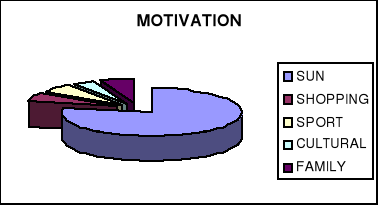
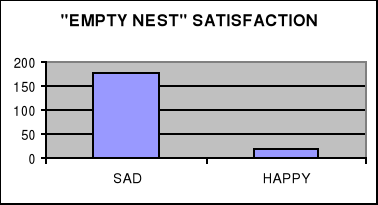
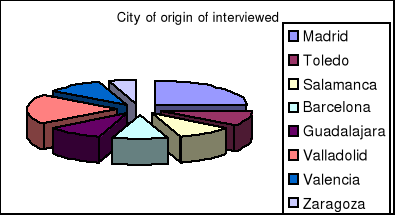
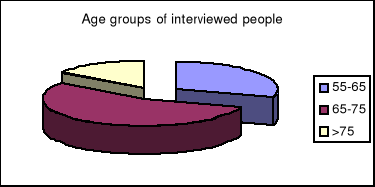
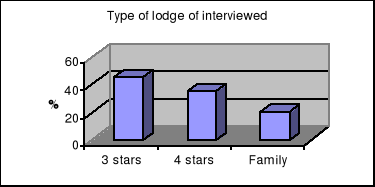
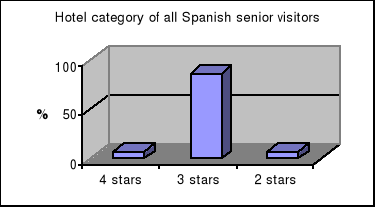
Descargar
| Enviado por: | El remitente no desea revelar su nombre |
| Idioma: | inglés |
| País: | España |
